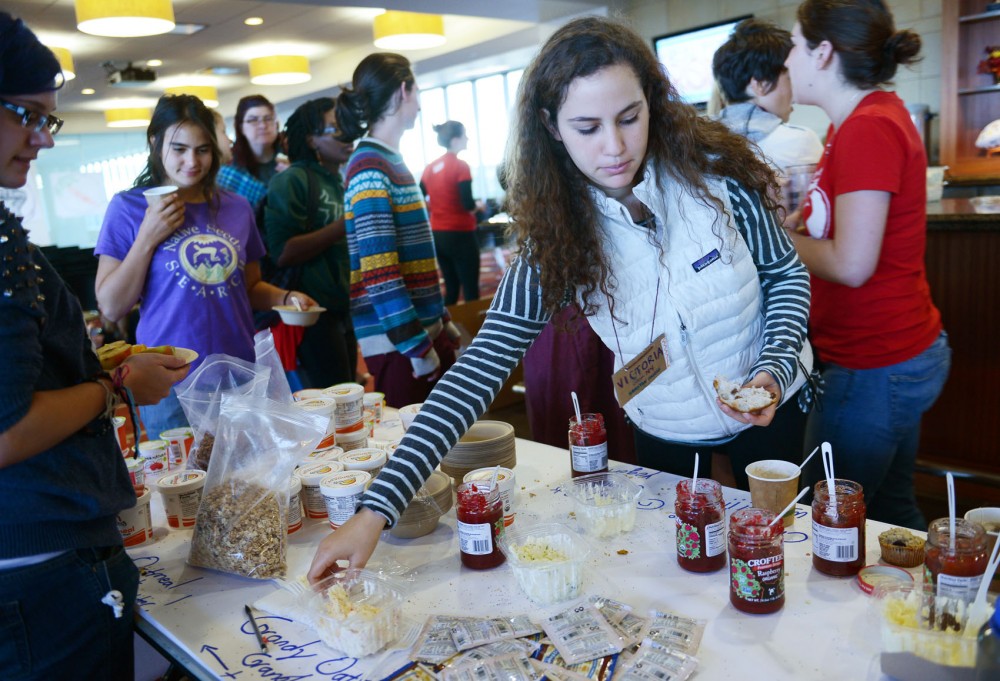Students from around the country gathered at TCF Bank Stadium this weekend to share ideas about food sustainability.
The students are continuing to push their schools to improve food sustainability by committing to the Real Food Challenge’s goal of 20 percent “real food” by 2020.
The Real Food Challenge defines “real food” as environmentally friendly and locally and socially responsible. It monitors the percentage of “real food” at colleges around the country, using a measurement system called the Real Food Calculator.
Katie Blanchard, the Real Food Challenge’s Midwest coordinator, said the University was selected to host the conference because it has the power to influence change.
“As a large, land-grant institution … it has a lot of power,” she said, “and also a lot of potential to lead efforts toward a more just and sustainable food system.”
After months of negotiations, the University has agreed to pilot the calculator in one dining hall, said Laura Dorle, an environmental science and policy senior and student organizer for the Real Food Challenge.
Nearly 20 schools have committed to 20 percent “real food” by 2020. Dorle said she’s happy the University agreed to test the calculator but hopes University Dining Services will do more with food sustainability in the future.
“While UDS has been making efforts to purchase more local and sustainable food, there’s a lot more that we could be doing in terms of trying to shape the local market, since we’re such a huge purchaser,” Dorle said.
UDS is scheduled to meet with U Students Like Good Food, the student group pushing for the calculator, again this week, according to an email statement from Leslie Bowman, executive director of contract administration at the University.
“UDS has been a strong contributor to academic sustainability initiatives,” she said in the statement. UDS declined to comment further because negotiations with the student group are ongoing.
Many students from other schools at this week’s conference are also working with their respective dining services and administrators to implement the calculator.
The University of Vermont has already committed to the 20 percent goal. Annalena Barrett, an environmental studies sophomore at UVM, said students are working with dining staff to meet the sustainability goals.
“We work with dining services people and faculty regularly,” she said. “They make up half of our working group, so we’re always in contact with them.”
Administration from the University of Minnesota-Morris is resisting the calculator despite significant support from the student body, said American Indian studies junior Laura Yourd.
Though only a few schools have agreed to the Real Food Challenge’s goals, student groups at about 300 colleges nationwide are pushing their administrations for more food sustainability, Blanchard said.
When the University begins piloting the food calculator, students from two courses will be in charge of calculating how much real food is used in the selected dining hall, Dorle said.
“If all goes well, we hope we’ll have data by the end of the semester and then be able to look into it at the beginning of the spring semester,” she said.








